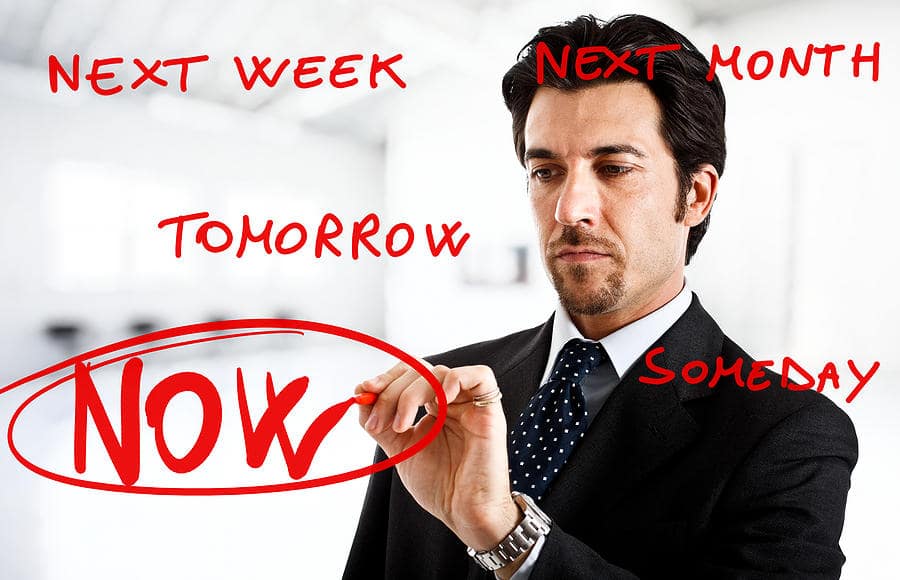This week’s article is provided by Jeff DeGraff, author of The Creative Mindset: Mastering the Six Skills that Power Innovation. This is an edited excerpt from his book and a companion to his interview on Innovating Leadership, Co-creating Our Future titled The Creative Mindset: Mastering Skills that Empower Innovation that aired on Tuesday, June 1st.
Regrettably, swaggering catchphrases like “go big or go home” are commonly associated with creative thinking. Accordingly, most of these braggarts end up doing the latter. The next big thing most likely will be small. Instead of trying to develop the next breakthrough technology, you might find an unfilled niche that a current technology could fill if it were used differently. Maybe a solution could be creative simply by applying it in a new way.
For example, super glue was developed for industrial, and household uses, but is now commonly used to close wounds. Alternatively, an old problem may be solved with a new approach. Consider how the repair of highway embankments was greatly expedited by adding cement to industrial canvas. Drape the cement-infused fabric like a carpet and just add water. Voilà, instant infrastructure. The solution doesn’t have to be revolutionary for the effect to be. Better, cheaper, and faster might also work.
When you’re searching for an opportunity for creative thinking, here are three things to look for:
- Find Unmet Needs and Fill Them
- Examine where clients and consumers are dissatisfied with a solution. For example, the poor patient satisfaction score of a medical practice might suggest an opportunity to connect physicians with a ridesharing service. Think of it as a return to house calls. Perhaps you notice that there are no decent restaurants in a number of rural areas near your house. There aren’t enough people in any one location to make a restaurant viable. You might repurpose an old delivery van as a gourmet food truck like the ones that line the streets of New York and Los Angeles. Each week you could bring a different cuisine. The key insight here is to uncover a shortcoming or void and to fill it.
- Find Inefficiencies and Fix Them
- Observing when and where services are untimely is a great way to locate a high-potential opportunity. Parking in any big city is a prime example. Municipalities generate an enormous amount of their revenue by writing parking tickets. Even though the technology exists to digitally connect the driver with the parking space, few cities adopt the solution because it is expensive and cuts into their profits. But, in reality, one does not need substantial financial support from the cities to produce such a product. By examining the traffic pattern data available to the public, based on probabilities, a software developer can develop an app that would serve the same purpose at a fraction of the cost and directly market it to drivers. The challenge isn’t to improve the technology. Instead, it’s to make parking more efficient. This type of challenge can be met without a massive amount of money. It just takes looking at it with a creative mindset.
- Find Complexity and Get Rid of It
- Identify systems that are unnecessarily complicated or that rely too heavily on bureaucratic procedures, and make them simpler. Suppose you are a college freshman at a large institution. You are directed to a website to select your first courses. There is a counselor you can see, but only for a few minutes, and you will have to wait almost until the deadline to register for courses. The complexity of the situation is anxiety-producing and counterproductive to get you set up for success at the start of your education.
Suppose that an enterprising librarian created a call-in service, something akin to what software companies do. The service representatives would have segmented different groups of students based on several variables such as interest, aptitude, and so on. They would have collaborated with the counselors beforehand and created several effective pathways for those student segments. They might be fluent in the registration system of a few universities. Students can use the call-in service to get help and advice on how to select courses based on their interests and walk through the process with the service representatives. The challenge of complexity might be better solved by working against technology trends.
This example is about not creating a new, more advanced technology but reverting to the old-fashion way of talking on the phone to someone who can answer all your questions and walk you through the technology to register for your classes. Sometimes, advanced technology doesn’t help as much as a simpler human solution.
Clarifying Your Challenge Pay Attention.
Look up, down, and all around yourself. Look for the things that other people don’t see. Chances are that if you see an obvious occasion to innovate, other people see it, too. So look for subtle patterns, small holes, tiny inconsistencies, minor inefficiencies. The opportunity to innovate may be inside something you see every day, but you’ll never see it if you don’t look closely enough.
You want to enter any innovation challenge with your eyes wide open. Before you embark on any new project, especially one that will consume your time, effort, and other resources, you need to be sure that you are solving the right problem and that you really want to do it. Otherwise, you will start many projects but never finish them.
Do not forget to learn from others. Technical descriptions can take you only so far. Meaningful conversations are what will shed the most light on your goals and situation. Listen to stories. Ask open-ended questions. If someone takes one point of view or tone, gently explore the opposite one and see how the person reacts. Pay attention to that person’s body language and energy. Follow-up questions are the key to learning what you really need to know. Good creators are, first and foremost, good listeners.
To become a more innovative leader, you can begin by taking our free leadership assessments and then enrolling in our online leadership development program.
Check out the companion interview and past episodes of Innovating Leadership, Co-creating Our Future, via iTunes, TuneIn, Stitcher, Spotify, Amazon Music, Audible, iHeartRADIO, and NPR One. Stay up-to-date on new shows airing by following the Innovative Leadership Institute LinkedIn.
About the Author
Jeff DeGraff is both an advisor to Fortune 500 companies and a professor at the Ross School of Business at the University of Michigan. His simultaneously creative and pragmatic approach to making innovation happen has led clients and colleagues to dub him the “Dean of Innovation.” He has written several books, including Leading Innovation, Innovation You, and The Innovation Code. His most recent book The Creative Mindset brings 6 creativity skills to everyone.





